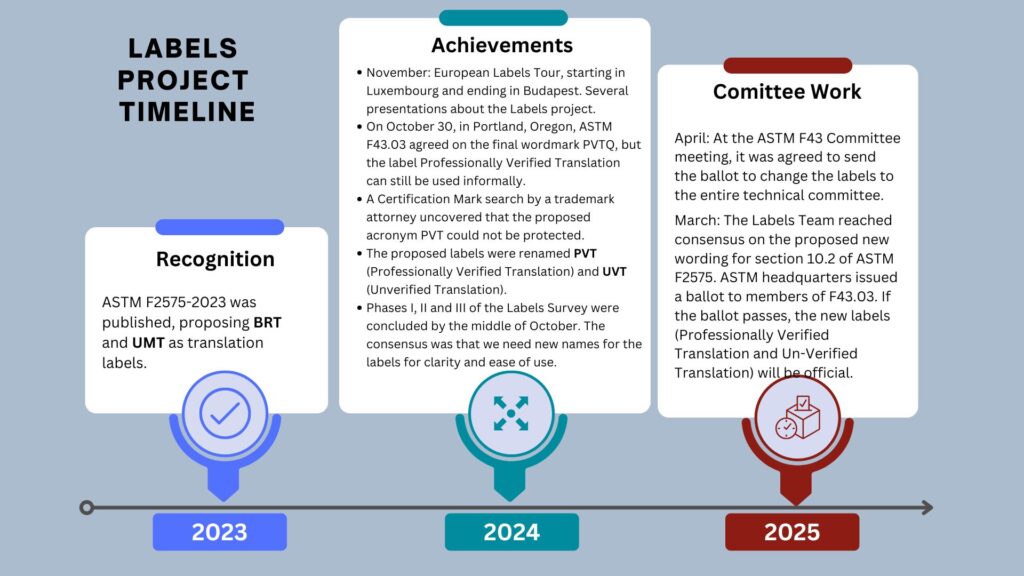

The Translation Consumer Labels Project Team (Labels Team, for short) was tasked by ASTM to provide a more accessible description of the labels to assist in disseminating the concept and its use. Expanding on the text of ASTM F2575-2023, section 10.2, the Team strives to make known that labels are used to differentiate professionally verified translations from those that are not.
The factors behind the new labels are the process*, the qualifications of the translators involved, and accountability (who is responsible for flaws in the final project).
*Common Processes: traditional translation, which involves a translator, a reviser, and a reviewer; post-edited machine translation, which may or may not involve a professional translator; or raw machine output, etc.
This page was last updated on April 24, 2025.
